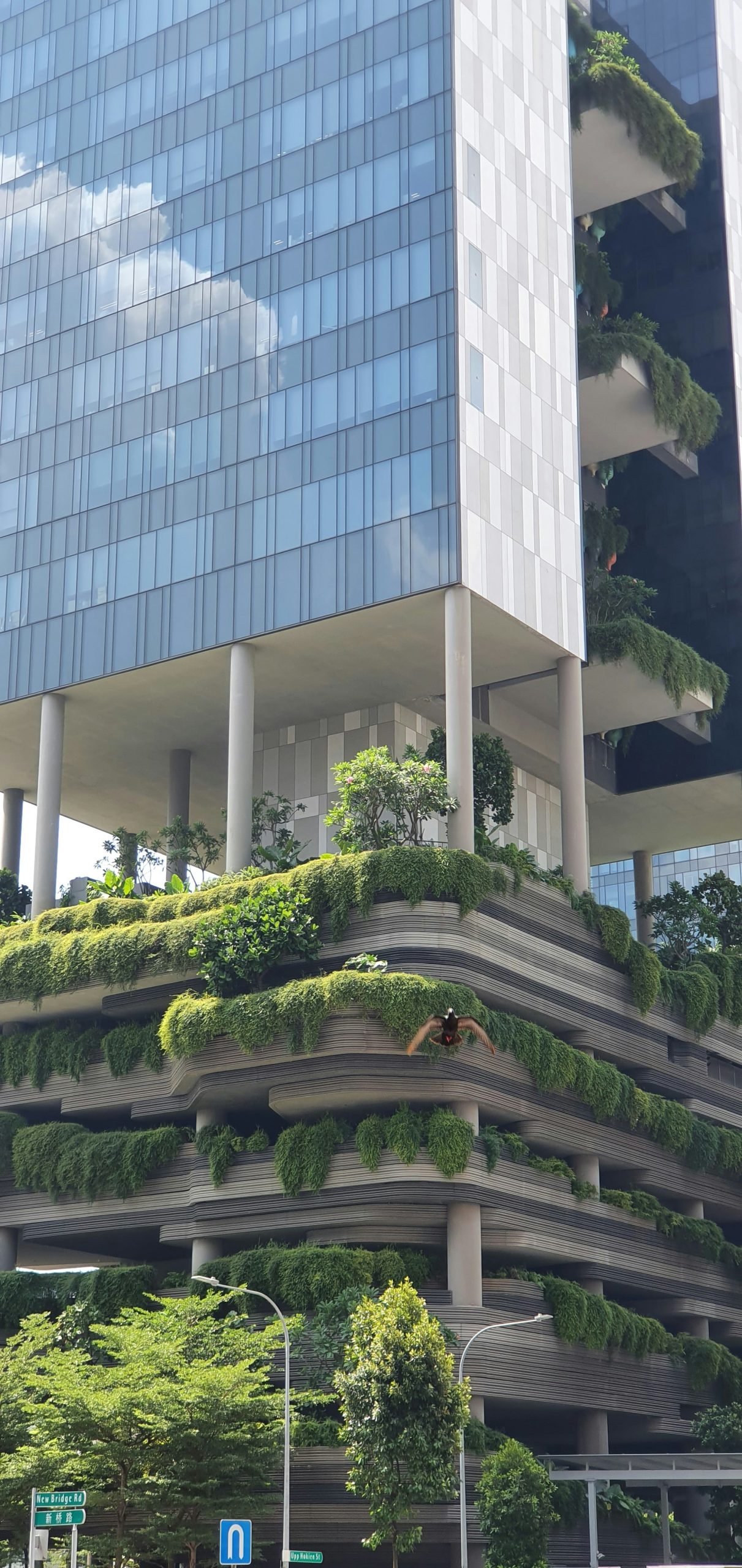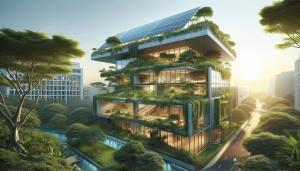Let’s dive into the fascinating world of sustainable architecture and its pivotal role in shaping zero-energy buildings. As the planet faces increasing environmental challenges, our focus on eco-friendly innovations has never been more crucial. By combining smart design principles, renewable energy sources, and efficient materials, we can craft buildings that not only minimize our carbon footprint but also generate as much energy as they consume. Our journey into sustainable architecture unravels the techniques and strategies that can make zero-energy buildings a reality, paving the way for a greener, more sustainable future. How do we, as a society, drastically reduce our energy consumption while maintaining the comfort and functionality of our buildings? This is a question that has gained significant importance as our awareness of environmental issues has grown. One promising answer lies in the realm of sustainable architecture—more specifically, the development of zero-energy buildings. But how can sustainable architecture genuinely contribute to the realization of such buildings? Let’s explore this fascinating topic together.
Understanding Zero-energy Buildings
First, let’s get on the same page about what zero-energy buildings (ZEBs) are. ZEBs are structures that generate as much energy as they consume over the course of a year. These buildings aren’t reliant on conventional energy sources, and they ideally have a zero net energy consumption rate.
Key Features of Zero-energy Buildings
- Energy Efficiency: The primary aspect of ZEBs is their incredibly efficient use of energy. This is achieved through advanced materials, superior insulation, and cutting-edge construction techniques.
- Renewable Energy: ZEBs generate their energy through renewable sources like solar, wind, and geothermal power.
- Smart Technology: The integration of smart technology helps monitor and regulate energy use more efficiently.
Now that we’ve covered the basics, let’s dig deeper into how sustainable architecture plays a crucial role in making ZEBs a reality.
Principles of Sustainable Architecture
Sustainable architecture involves designing and constructing buildings in a way that minimizes their environmental impact. Several principles guide this approach:
Use of Renewable Resources
Sustainable architecture emphasizes the use of renewable resources in construction and operation. This includes materials like bamboo, recycled metals, and sustainably sourced wood.
Energy Efficiency
One of the primary goals is to maximize energy efficiency. Techniques to achieve this include using LED lighting, high-efficiency HVAC systems, and advanced building materials with excellent insulation properties.
Waste Reduction
Sustainable architecture also focuses on minimizing waste during the building process. This can involve prefabricated components, recycling construction waste, and designing for future adaptability and disassembly.
Water Conservation
Water-efficient plumbing fixtures, rainwater harvesting, and greywater recycling are all components of sustainable architecture that contribute to water conservation.

How Sustainable Architecture Contributes to Zero-energy Buildings
Now that we understand the fundamentals of both ZEBs and sustainable architecture, let’s see how they intersect.
Designing for Energy Efficiency
The first step in creating a ZEB is to reduce energy demand as much as possible. Here, sustainable architecture shines:
- Orientation and Layout: By strategically orienting the building and designing the layout to maximize natural light and ventilation, we can significantly reduce the need for artificial lighting and climate control.
- High-performance Insulation: Using high-performance insulation materials helps maintain a stable indoor temperature, reducing the need for heating and cooling.
- Energy-efficient Windows: Triple-glazed, low-E windows help to keep heat in during the winter and out during the summer.
Renewable Energy Integration
Zero-energy buildings need to generate their energy, and this is where the integration of renewable energy systems comes into play:
- Solar Panels: Rooftop solar panels are one of the most common ways to supply a ZEB with renewable energy. Solar shingles can be an alternative for aesthetic integration.
- Geothermal Systems: These systems draw on the stable temperatures underground to provide heating and cooling.
- Wind Turbines: While less common in urban settings, small wind turbines can be a viable option in areas with sufficient wind resources.
Smart Technology
Incorporating smart technology into both energy management and daily operations optimizes energy use:
- Smart Thermostats: These devices learn the occupants’ habits and adjust the temperature accordingly, avoiding unnecessary energy use.
- Energy Monitoring Systems: Systems that provide real-time feedback on energy consumption can alert occupants to waste and suggest optimizations.
- Automated Lighting: Lights that turn off automatically when no one is in a room can greatly reduce energy waste.
Case Study: A Real-world Example
It’s always helpful to look at a tangible example to understand these concepts better. Let’s consider the Bullitt Center in Seattle, often referred to as the “greenest commercial building in the world.”
The Bullitt Center
- Energy Efficiency: The building is designed with energy efficiency in mind, featuring superior insulation, triple-glazed windows, and automated blinds to control sunlight exposure.
- Renewable Energy: A large array of solar panels on the roof provides more than enough energy to meet the building’s needs.
- Waste Reduction: The Bullitt Center uses composting toilets and a rainwater harvesting system that meets all its water needs.
- Smart Technology: Advanced energy management systems monitor and optimize energy use.
The Bullitt Center is an excellent example of how sustainable architecture can lead to the creation of a zero-energy building.
Challenges and Solutions
Of course, building ZEBs comes with its own set of challenges. But as with any problem, understanding the issues at hand can help us find solutions.
High Initial Costs
One of the most significant barriers is the high initial cost. Advanced materials, smart technologies, and renewable energy systems all come with a hefty price tag.
Solution: Over time, the reduction in energy costs will offset the initial investment. Additionally, governments and organizations are increasingly providing incentives and rebates for sustainable construction.
Public Perception
Another challenge is the public perception that sustainable buildings are less aesthetically pleasing or less comfortable than traditional buildings.
Solution: Education and awareness campaigns can help change these perceptions. Moreover, architectural design innovations are proving that sustainability and aesthetically pleasing designs are not mutually exclusive.
Technological Barriers
While technology is advancing rapidly, there are still technological barriers that need to be overcome, such as the efficiency of renewable energy systems and the integration of smart technologies.
Solution: Continuous research and development in the field of sustainable architecture and renewable energy can help overcome these barriers.

The Role of Policy and Regulation
Government policy and regulation can significantly influence the adoption of zero-energy buildings. Here’s how:
Building Codes and Standards
Governments can implement building codes and standards that require new constructions to meet specific energy efficiency criteria.
Financial Incentives
Tax rebates, grants, and other financial incentives can make it more financially viable to undertake ZEB projects.
Education and Training
Government-funded education and training programs can help architects, builders, and engineers gain the skills they need to design and construct zero-energy buildings.
Mandates and Targets
Setting specific targets for the reduction of greenhouse gas emissions can encourage the development of ZEBs as part of broader climate action strategies.
Future Trends in Sustainable Architecture and Zero-energy Buildings
Looking ahead, several trends are likely to shape the future of sustainable architecture and zero-energy buildings.
Increased Use of Prefabrication
Prefabrication saves time and reduces waste. As the technology advances, we can expect to see more prefabricated zero-energy buildings.
Integration of Circular Economy Principles
A circular economy emphasizes the reuse and recycling of materials. Buildings designed with these principles in mind will have an even lower environmental impact.
Advances in Building Materials
New materials, such as aerogels and phase-change materials, hold promise for even better insulation and energy efficiency.
Smart Cities
The concept of smart cities, where everything from transportation to energy use is optimized through technology, supports the broader adoption of zero-energy buildings.

The Human Element: Occupant Behavior
While technological advancements and architectural innovations are crucial, the human element cannot be overlooked. Occupants’ behaviors significantly impact a building’s overall energy consumption.
Educating Occupants
Informing occupants about energy-efficient behaviors can lead to significant savings. Simple actions like turning off lights when not in use or properly setting thermostats can make a big difference.
Feedback Systems
Real-time feedback systems can help occupants understand their energy consumption patterns and make adjustments accordingly.
Incentivizing Sustainable Behavior
Programs that incentivize sustainable behavior, such as lower utility bills for reduced energy use, can also be effective.
Conclusion: A Collaborative Effort for a Sustainable Future
In conclusion, sustainable architecture holds the key to the future development of zero-energy buildings. By utilizing renewable resources, maximizing energy efficiency, and integrating smart technology, we can drastically reduce our reliance on conventional energy sources. While there are challenges to overcome, concerted efforts from policymakers, architects, builders, and occupants can make ZEBs a widespread reality.
The journey toward a sustainable future is a collaborative effort. Every stakeholder from government bodies to individual inhabitants plays a crucial role in pushing the envelope of what’s possible. With advances in technology and a commitment to eco-friendly practices, we are moving ever closer to a world where zero-energy buildings are not the exception, but the norm.
So, as we continue to innovate and educate ourselves and others, let’s continue asking: How can we make our buildings not just structures, but integral parts of a more sustainable world? Together, we can find the answers and build a better future for all.



